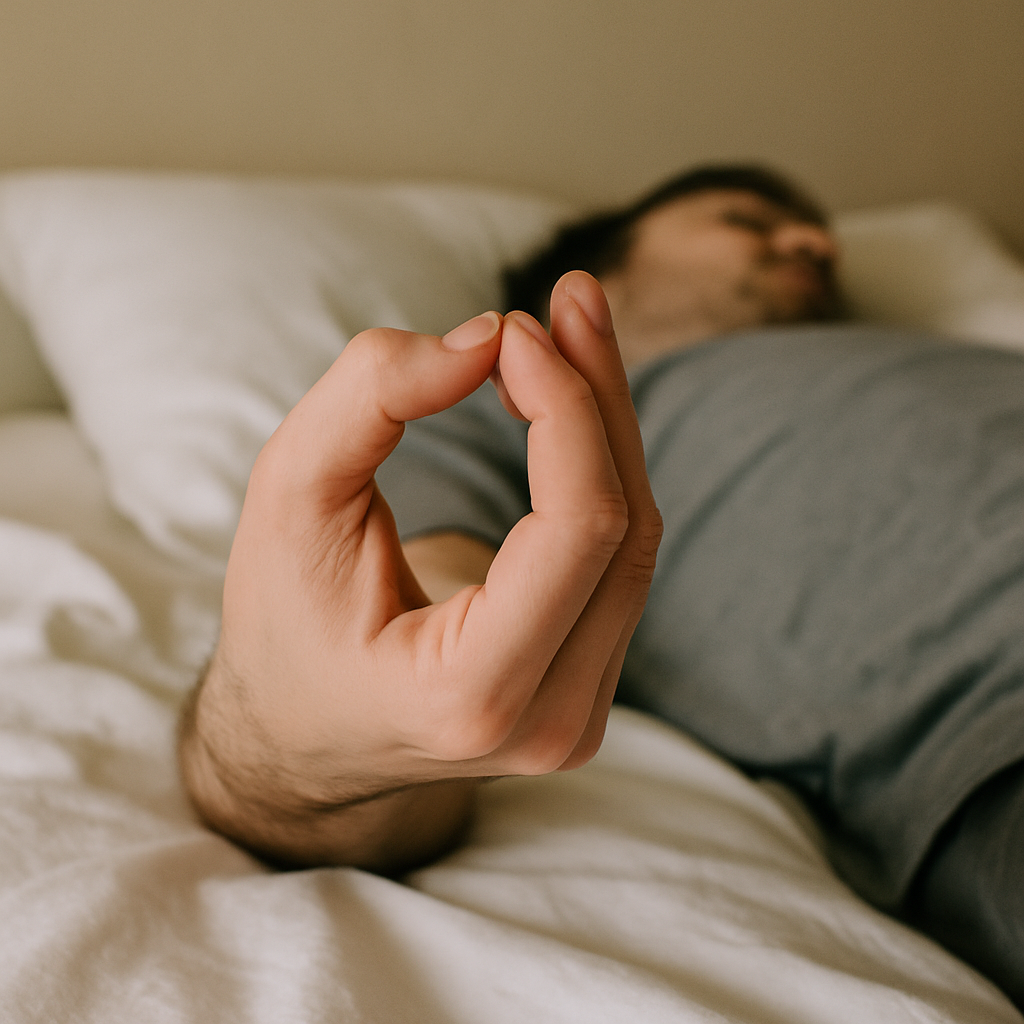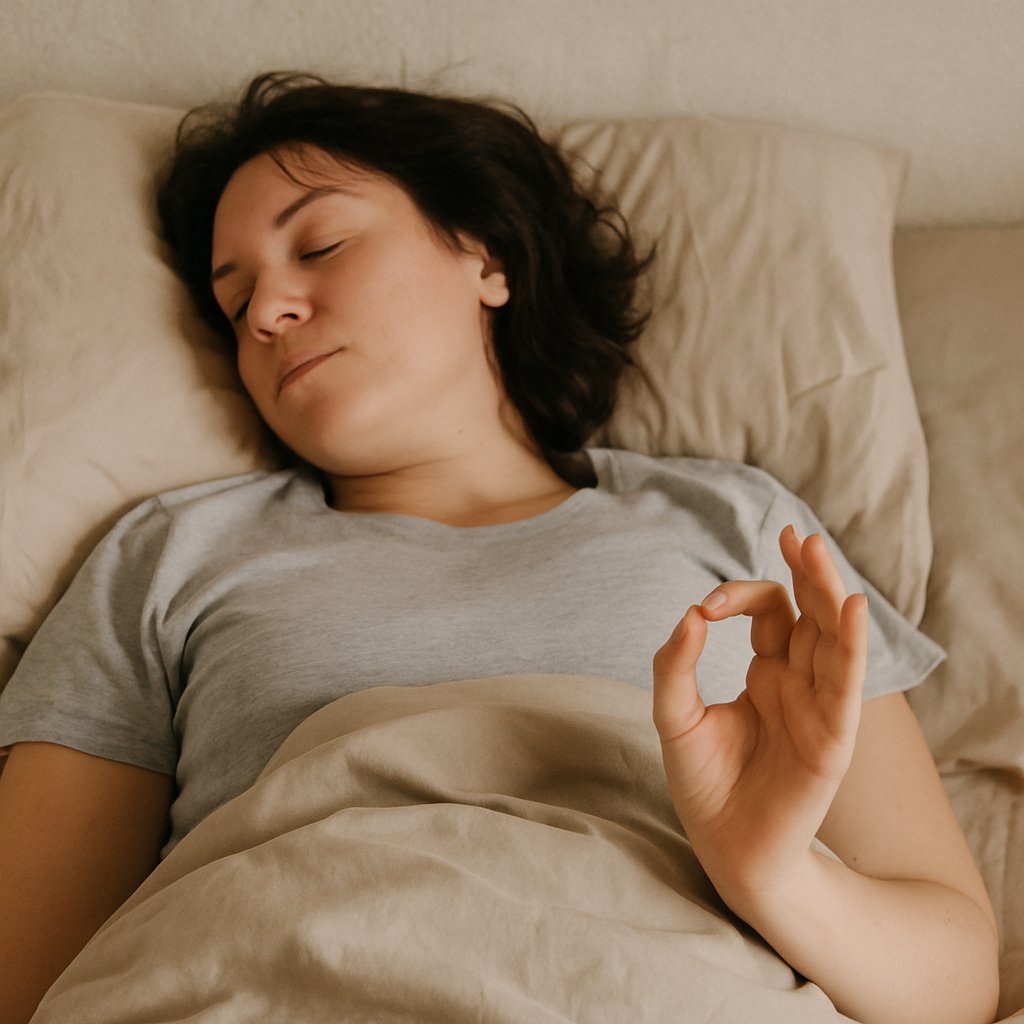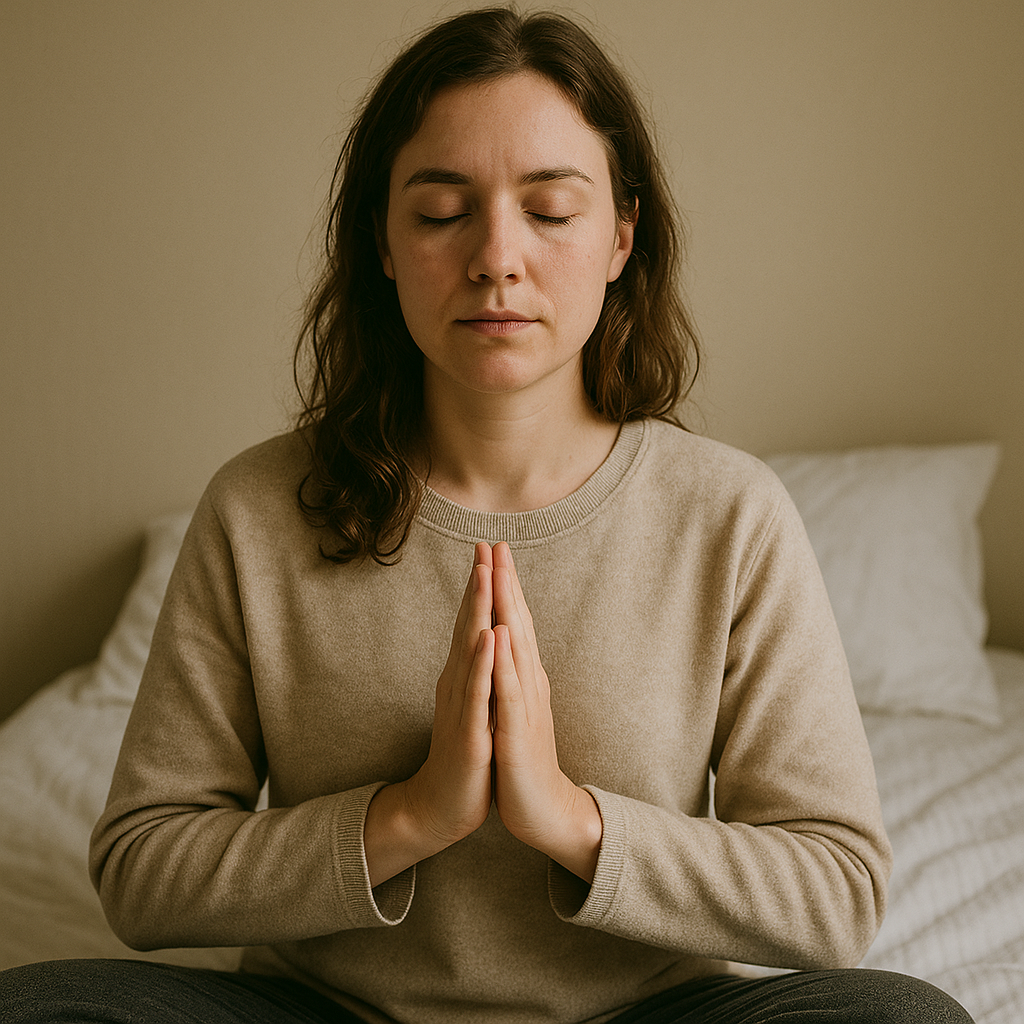Shop Now in Our Store
Which Mudra Is Good for Sleep: Discover Ayurvedic Hand Gestures for Restful Nights

Struggling to fall asleep night after night? You’re not alone. Many people search for natural ways to improve their rest, and one surprisingly simple solution lies right at your fingertips—literally. The question “which mudra is good for sleep?” has been gaining popularity as more people explore ancient Ayurvedic practices for better sleep hygiene. Mudras, or hand gestures used in yoga and meditation, have been shown to promote relaxation and ease anxiety, helping you drift off faster and enjoy deep, sound sleep. In this article, we’ll explore various mudras for sleep, including sleep mudra, mudra for deep sleep, and mudra for immediate sleep, offering you practical tips to improve your nightly rest.
If you’ve ever wondered how a simple hand position could impact your sleep quality, you’re about to find out. We’ll cover the best mudra for sleep, mudra for sleeping quickly, and even mudras that help reduce anxiety and calm the mind at bedtime. So, whether you’re dealing with insomnia or just want a more restful night, these techniques could be game-changers.

Understanding the Link Between Mudras and Sleep Quality
What Is a Mudra and How Does It Affect the Nervous System?
Mudras are symbolic hand gestures used in yoga, meditation, and Ayurveda to direct the flow of energy within the body. But how does holding your fingers in a certain way affect your sleep? It’s all connected to the nervous system and subtle energy channels called nadis. When you form specific mudras, they stimulate particular nerves and pressure points that influence the brain and body’s relaxation response.
For example, mudras can help regulate your breath, slow down your heart rate, and calm the mind—three essential factors for falling asleep easily. This connection between physical gestures and mental state makes mudras a natural tool to encourage sleepiness without medication or side effects.
Why Mudras Help with Sleep and Anxiety According to Ayurveda
Ayurveda, the traditional Indian system of medicine, believes that imbalances in the body’s energy channels cause many health issues, including sleep disturbances. Mudras are a way to restore balance by activating different elements within the body, such as air, water, fire, earth, and ether.
When it comes to sleep, mudras often focus on calming the air element and boosting the water element, promoting tranquility and emotional balance. This helps reduce anxiety and restless thoughts, which are common culprits of poor sleep. So, mudra for sleep and anxiety isn’t just a fad—it’s rooted in centuries of healing wisdom.

Top Mudras for Sleep and Relaxation
Mudra for Deep Sleep and Nightly Recovery
One of the best mudras for sleep is called the Shuni Mudra. This mudra involves touching the middle finger to the thumb, which helps activate patience and mental calmness. Practicing Shuni Mudra before bed can promote deep sleep and aid the body’s nightly recovery processes. You can easily do this mudra while sitting on your bed or lying down.
Another powerful option is the Apan Vayu Mudra, sometimes called the “heart mudra,” which relieves anxiety and calms the nervous system, making it a great mudra for good sleep.
Mudra to Get Sleep Immediately: Practice Before Bed
If you’re looking for a mudra to get sleep immediately, the Gyan Mudra is often recommended. This simple gesture—touching the index finger to the thumb—helps increase focus and quiet the mind, which can make falling asleep faster much easier.
Practicing this mudra along with slow, deep breathing can calm your racing thoughts, making it a sleep mudra you’ll want to try tonight. It’s quick, effective, and requires no special equipment.
Yoga Mudra for Sleep and Mental Stillness
Yoga mudras for sleep combine gentle hand gestures with mindful awareness to bring mental stillness and physical calm. One such mudra is the Prana Mudra, which involves touching the tips of the ring finger and little finger to the thumb. This mudra is believed to activate the life force energy in your body, enhancing vitality while promoting relaxation.
Practicing Prana Mudra before bedtime can help soothe restlessness and prepare your body for a restful night. Unlike other mudras that target immediate sleep, this one works more on stabilizing your energy throughout the night so you wake up feeling refreshed.
Deep Sleep Mudra: The Varuna Mudra
If you suffer from light or disturbed sleep, the Varuna Mudra might be a solution. It’s created by touching the little finger to the thumb and is thought to balance the water element in the body. This helps regulate hydration and maintain emotional stability—both crucial for deep sleep.
By regularly practicing this deep sleep mudra, you may notice an improvement in how soundly you sleep and how rested you feel in the morning. It’s simple, but its effects can be surprisingly profound.
Mudra for Sleep and Anxiety: Calming the Mind
Anxiety is one of the biggest reasons people struggle to fall asleep. The Apan Mudra is a powerful hand mudra for sleep and anxiety relief. Formed by touching the tips of the thumb, middle, and ring fingers together while keeping the other fingers straight, it’s said to help detoxify the body and calm an anxious mind.
Practicing this mudra along with slow breathing can reduce cortisol levels and promote a feeling of peace, making it easier to fall asleep fast and stay asleep longer.

How to Practice Sleep Mudra Effectively at Home
Step-by-Step Instructions for Hand Mudra for Sleep
Starting with mudra for sleeping is easier than you think. Here’s a basic step-by-step guide:
-
Find a comfortable seated or lying position where you won’t be disturbed.
-
Relax your shoulders and close your eyes.
-
Form the mudra with your hands as described—whether it’s Gyan Mudra, Shuni Mudra, or any other sleep mudra you choose.
-
Rest your hands gently on your knees or thighs, palms facing upwards.
-
Breathe slowly and deeply, focusing on your breath or the sensation of your fingers touching.
-
Continue for at least 5 to 15 minutes or until you feel relaxed enough to sleep.
How Long to Hold the Mudra for Sound Sleep
Consistency is key when practicing any mudra for sleep. Experts often suggest holding a mudra for a minimum of 15 minutes daily. But even shorter sessions, like 5 minutes before bed, can provide calming benefits.
The more regularly you practice, the more effective the mudra becomes, training your nervous system to enter a relaxed state faster each night.
Combining Mudra with Breathing for Better Results
Pairing your mudra practice with deep breathing exercises enhances the effects significantly. Try inhaling deeply through your nose for a count of four, holding for a count of four, then exhaling slowly for a count of six or eight. This kind of breathwork supports the relaxation triggered by the mudra, helping you sleep fast and deeply.
Using this combined technique can be especially helpful for those who find their mind racing or anxiety spikes when trying to fall asleep.
Conclusion
Incorporating mudras into your nightly routine can be a gentle yet powerful way to improve your sleep quality. Whether you’re searching for the best mudra for sleep, a mudra to get sleep immediately, or a deep sleep mudra to help with recovery, these ancient hand gestures offer natural relief without side effects. The beauty of mudras is that they are simple to practice anywhere, require no special equipment, and connect your mind and body in a unique way to promote rest.
Remember, mudras work best when practiced consistently and combined with mindful breathing. So next time you find yourself tossing and turning, try one of these hand mudras for sleep and anxiety relief. You might be surprised at how quickly they help you drift into a sound sleep and wake up refreshed.
If you enjoyed this guide, don’t keep it to yourself! Share it with friends or family who might also benefit from these easy and natural ways to sleep better.
FAQs
How long should I hold a mudra for sleep?
Most practitioners recommend holding a mudra for at least 15 minutes daily to notice real benefits. However, even 5 minutes before bedtime can help calm your mind and prepare you for sleep.
Can mudras help with insomnia or disturbed sleep?
Yes, mudras are believed to help regulate the nervous system, reduce anxiety, and promote relaxation, making them a helpful tool for mild to moderate sleep issues like insomnia or disturbed sleep.
Are there any side effects of practicing mudras at night?
Mudras are generally safe and free of side effects since they involve gentle hand gestures and breathing. However, if you experience discomfort or unusual sensations, stop and consult a healthcare professional.
This article is checked by the current qualified Dr Sujal Patil and can be considered a reliable source of information for users of the site.
Got any more questions?
Ask Ayurvedic doctor a question and get a consultation online on the problem of your concern in a free or paid mode.
More than 2,000 experienced doctors work and wait for your questions on our site and help users to solve their health problems every day.

